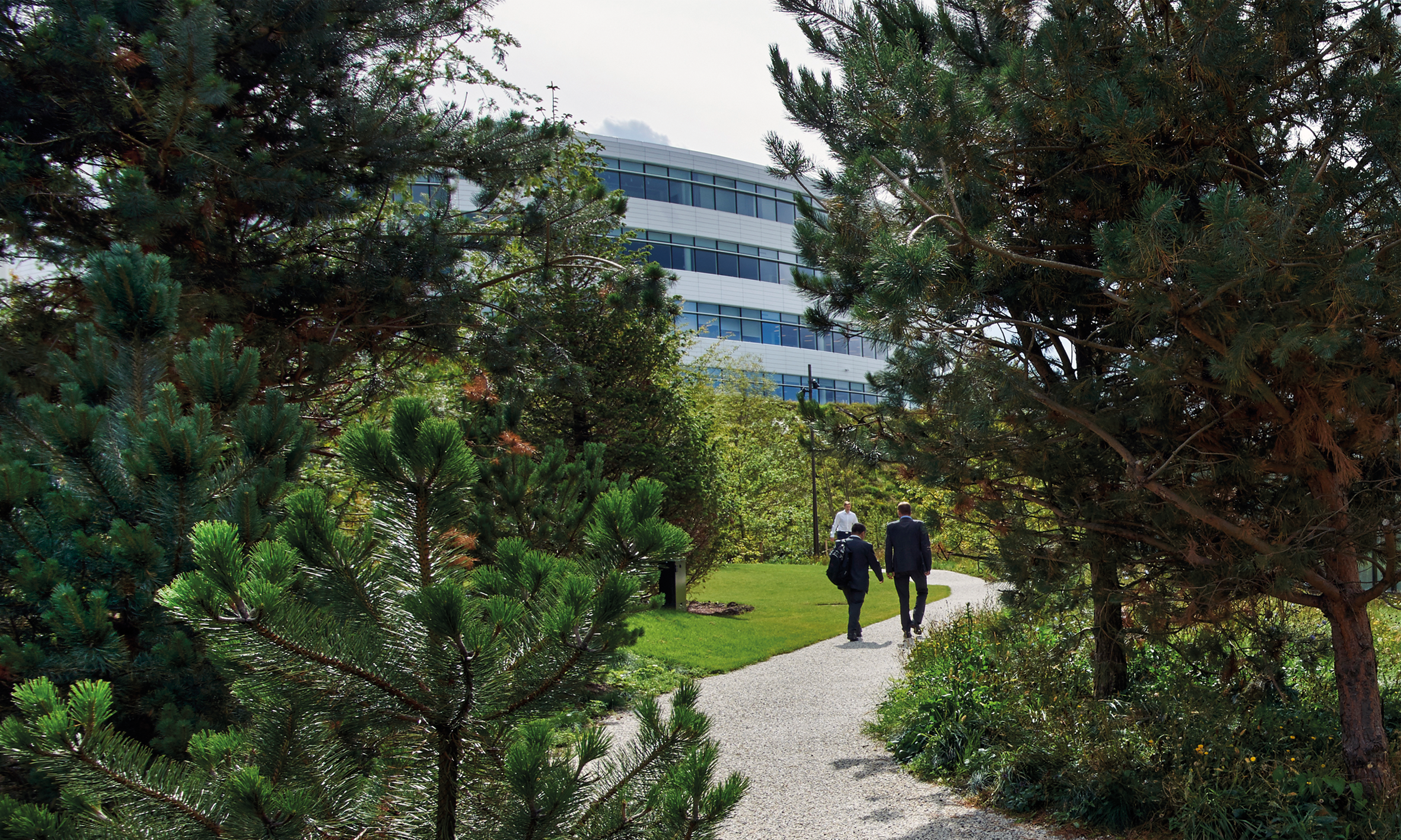
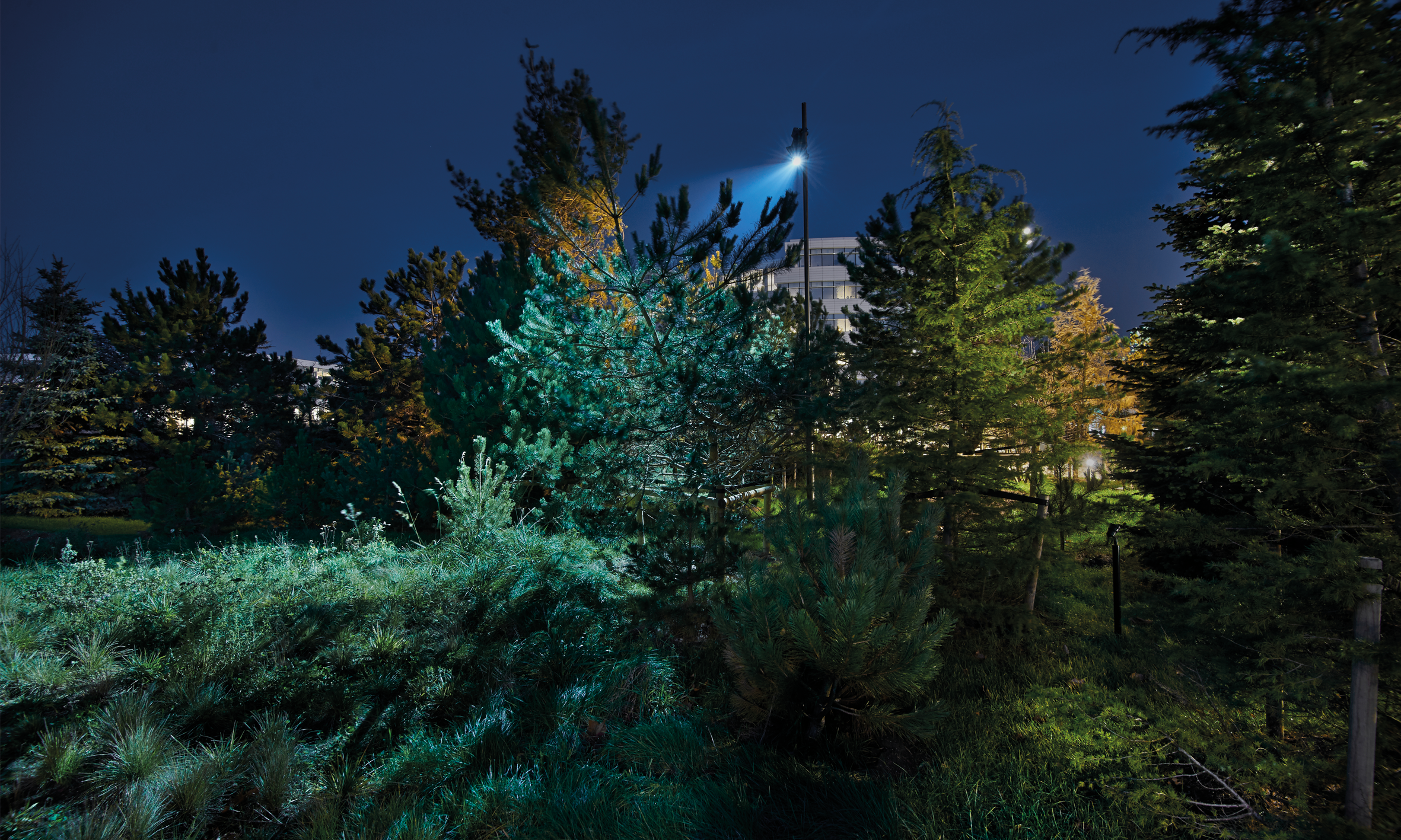

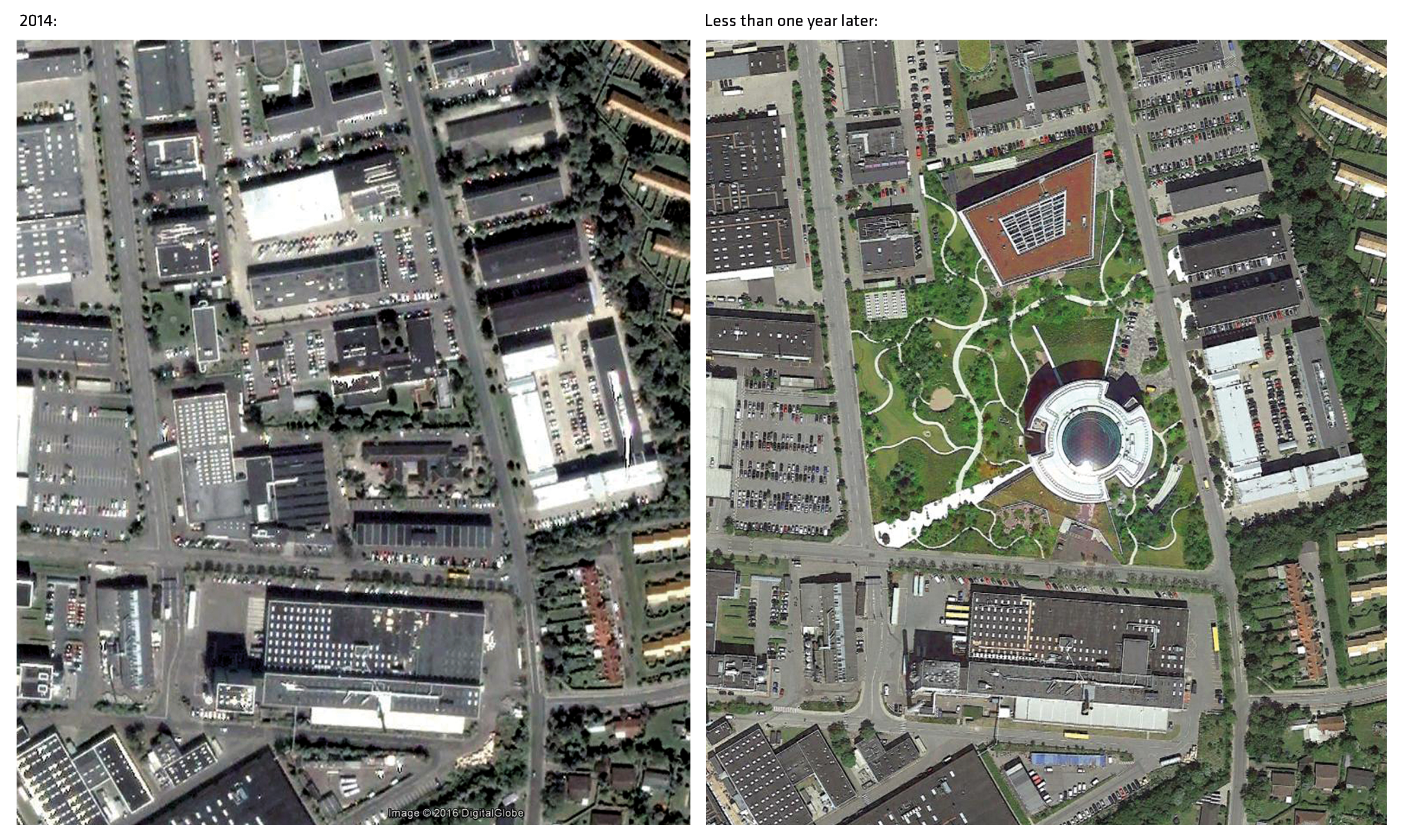
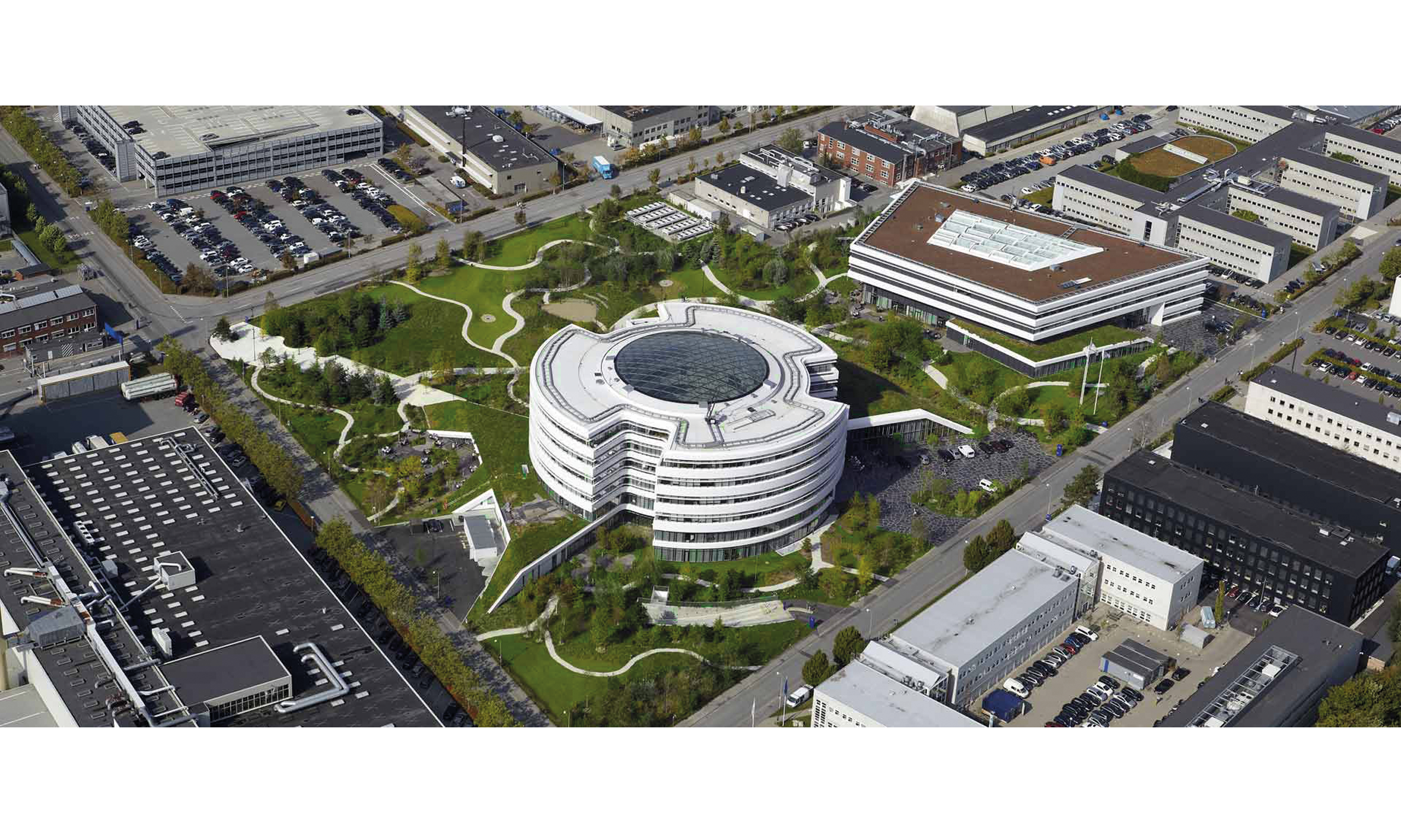
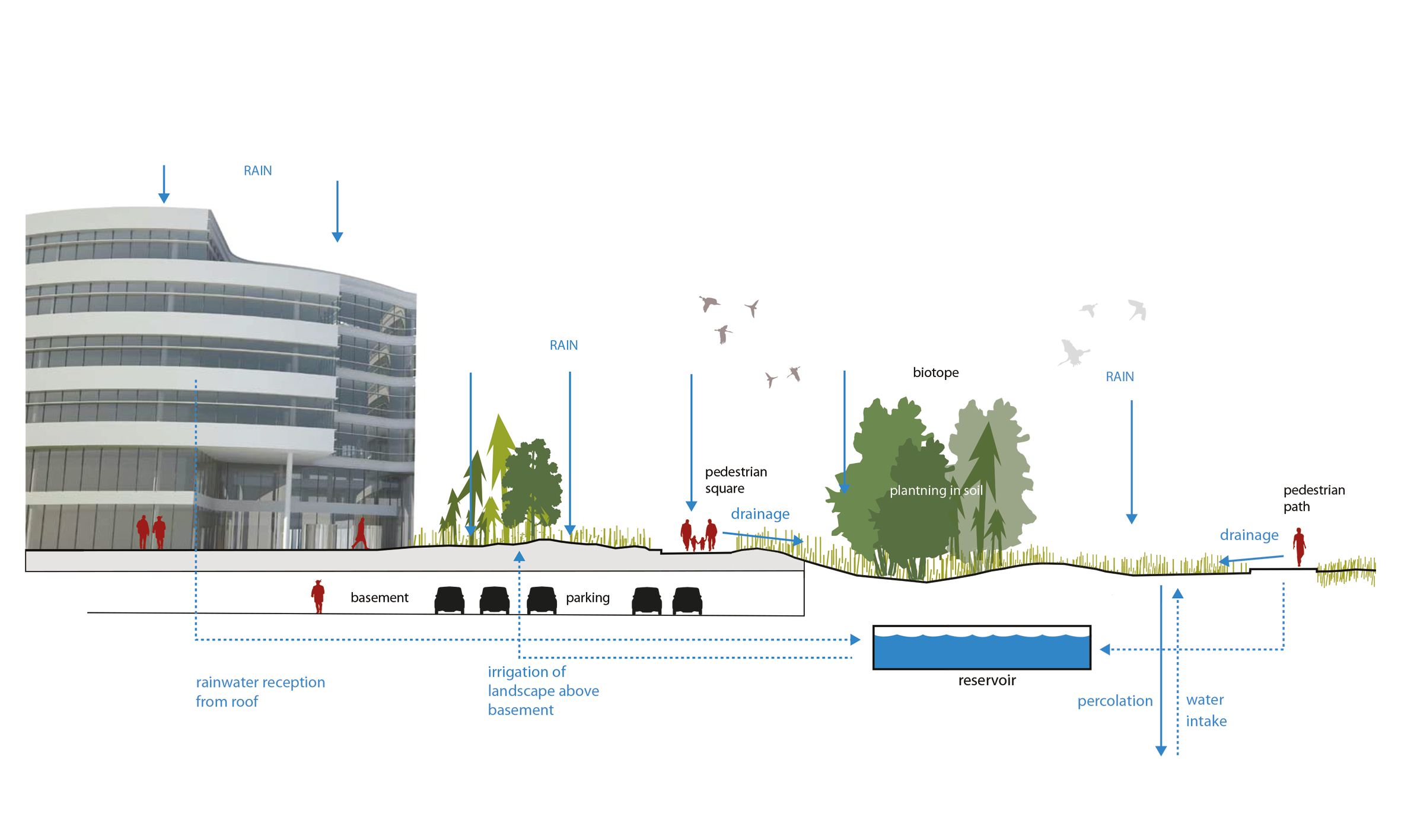

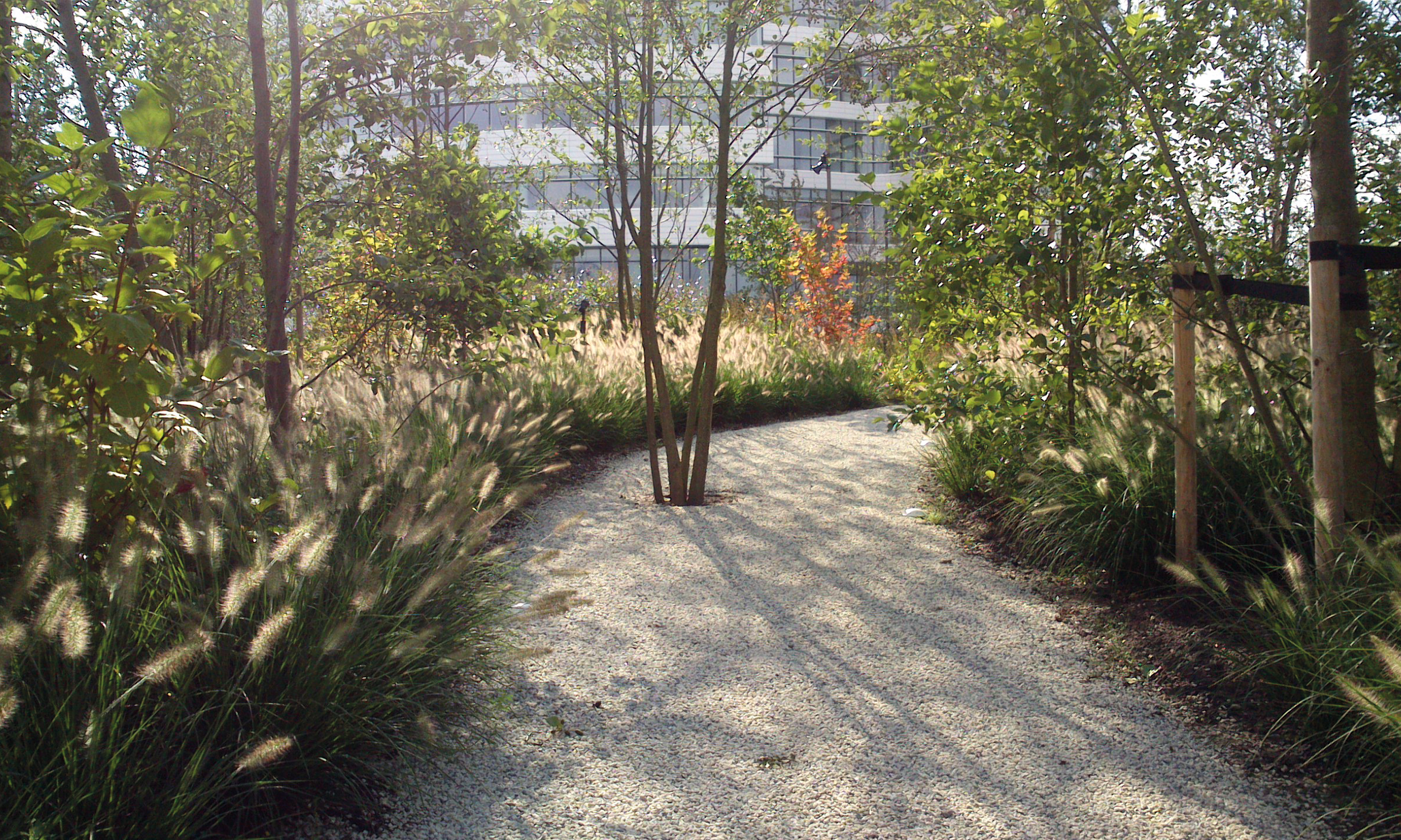

Novo Nordisk Nature Park
Summary
Inspired by the Scandinavian nature SLA has created a unique public park with maximum nature value and minimal maintenance.
Novo Nordisk Nature park is a new performative landscape, surrounding the new headquarter for the Danish pharmaceutical company, Novo Nordisk. The landscape interprets the Scandinavian forest and hilly dead ice-topography and have with 1,000 new trees and 100 different species transformed the former industrial area into a biodiverse, rich nature park for employees, local citizens and visitors alike.
Novo Nordisk’s unconditional commitment to innovation is mediated in the landscape through a stress relieving and recreational outdoor space for the employees that facilitates knowledge exchange, discussions and synergy.
Sustainable solution in regards to rainwater management, microclimate, biodiversity and maintenance, makes the nature park robust to climate change and provides both an ecological value, great cost savings and provides a strong green brand for one of Denmark’s leading companies.
Introduction
In the city of Bagsværd, North of Copenhagen, the Danish pharmaceutical company Novo Nordisk has erected its new corporate headquarter. The headquarter, which houses the company’s top management and 1.100 administrative staff, is located in a large, public park, designed by SLA Architects.
As a world-leading pharmaceutical company, Novo Nordisk is working in a highly competitive market where innovation and constant development is a prerequisite. In designing the nature park, SLA designers have focused on creating an ideal working environment for Novo’s employees, providing new and nature-based opportunities for knowledge sharing, synergy and creativity. Thus, Novo Nordisk Nature Park not only provides Novo Nordisk with a green, recreational framework; the park also provides a new type of innovation lab that breaks with the traditional idea of an office building. Instead, the project proposes an idea of the ideal working environment (and, indeed, of architecture in general) as composed of two equal parts; the built and the grown.
A new type of headquarter
In most business parks today, the same recipe is almost always used to construct corporate domiciles: A built structure containing all business activities, and a surrounding area used almost exclusively for parking and creating no value for the business or its employees. In the new Novo Nordisk headquarter, parking facilities are placed underground with the nature park on top, creating a stimulating and attractive work environment for employees and a strong landscape brand for Novo Nordisk. Here, the landscape is not separate from the working environment. To the contrary, the nature park is an integral part of the Novo Nordisk facilities; the park completes the indoor facilities by providing an outdoor innovation lab with the best possible conditions for working outdoors, creative thinking, and dynamic exchanges between colleagues. The park extends all the way up to and even onto the top of the buildings (green roofs), giving the feeling of being outdoors while inside which increases the well-being of the employees.
Besides being a highly functional corporate setting for Novo Nordisk and its employees, it was also important to both Novo Nordisk and the designers that the park should be generous and give more than it takes. Therefore, the nature park is open to the local community, providing a unique aesthetic experience for all citizens of Bagsværd in an area that otherwise lacks public green spaces.
Creativity: A walk in the park
The park’s overall design concept is founded on the great Danish thinker Søren Kierkegaard who got his best ideas while walking. So did many other great thinkers through time, as well as lesser known ones; most people have at some point taken a walk to ‘clear their heads’ or think things over. Modern research has shown that people become more informal, more relaxed and more creative and open to new ideas when they are outside. This is especially true when they walk in nature that is untamed, natural and varied in its expression.
In Novo Nordisk Nature Park this knowledge is used to create a lush nature park intersected by a winding path system cutting in, out and in-between the many different types of nature in the park. The park thus accentuates the aesthetic experience of nature and is tailored to provide great sensuous variation of space, light, shadow, smell, color and sound.
While of course providing general access around the site and between buildings, the paths also make it convenient and indeed inevitable for employees to meet their colleagues and arrange walk-and-talk meetings outdoors. The paths never lead the shortest way from A to B but wind their way between the biotopes to make each trip long enough for the employees to unwind, think and meet others on their way. Trees are placed in the middle of the path to enhance walkers’ attention and immersion in the park; rather than being a park to walk through, it is a park to walk, think, meet and be inspired in.
The aesthetics of biodiversity
The nature park itself uses a wide palette of native plants and holds over 1,000 new trees which over time will grow into clearly defined small ’forests’ and self-regulatory biotopes. The vegetation is designed to be wild and self-regulating which allows the biotopes to evolve with natural succession and minimal care. Every single tree has been inspected and hand-picked by the designers in specially selected nurseries, and composed in relation to their natural habitat, their shape, their volume and in relation to the local microclimate to maximize shelter for the users of the park and for the office buildings.
To create maximum biodiversity, several dead trees have been placed in the park. Beside from their complex and rich aesthetic qualities, dead tree trunks have vital value for natural ecosystems, as they are important habitats for beetles, caterpillars, mosses, etc. But they also provide the park with the smell of decay, the rot of the trunks and a direct confrontation with the life and death of nature’s ecosystem. A powerful exhibition of the full aesthetic feeling of nature.
Rainwater management
The trees also help to absorb all rainwater that falls on site. Depressions are planted with alder trees and other water tolerant species in order to contribute to the park's ambitious climate adaption design. As such, Novo Nordisk Nature Park is the first park in Scandinavia with 100 percent natural water balance. All rainwater that falls in the area and on the buildings is collected and used for irrigation. Because of the landscape’s carefully designed topography and plantation the nature park can handle even torrential 100-year rainfall events without directing any water into the sewers. Because of its innovative features, the park also serves as rainwater reservoir of the entire area.
Lighting
Lighting also plays an integral part in the design of the nature park. During daytime, the sunlight will allow the vegetation and the leaves to cast weaving shadows on the gleaming white concrete of the paths. In the evening the landscape is lit up by carefully aligned tones of white light which highlights and enhance the natural colors and movements of the vegetation. The careful use of both diffuse, direct, scattered and reflected light creates a defining spatial and almost tactile language which gives a strong character and unique identity to the site. At the same time, it allows for recreational use around the clock and a safe trip to and from work during the dark Scandinavian winters. By combining strategically designed lighting with the reflections of the white concrete, the energy consumption of lighting the park has been reduced by 65 %.
The nature park today
In less than a year, the project transformed a traditional business park parking lot into a highly performative landscape, both socially, biologically and financially. Today, Novo Nordisk Nature Park is a lush public park and outdoor innovation lab. It has made wild nature and chance meetings with colleagues a natural part of the working day at Novo Nordisk and enhanced the biodiversity and sustainability of an entire area of Copenhagen. New species has immigrated to the new park, and both the broken-belted bumblebee and the blue butterfly have been registered. The park has established itself as a popular recreative space in the local community that offers high-quality green surroundings to an area that otherwise lacks green spaces.
The new Novo Nordisk headquarter has proven that it is possible to develop business domiciles that combine private economic interests and pragmatic needs with a wish of sustainability and genuine well-being and improved quality of life for its users. The key figures below illustrate the improvements created by the project, which points towards a new and feasible approach to how to handle the urgent rise of private-public spaces in our cities.
- 550 % increase in number of employees (from 200 to 1,100 employees)
- 42 % decrease in building footprint (from 12.000 m2 to 7,000 m2)
- 440 % increase in landscape m2 (from 5.000 m2 to 22,000 m2)
- 94 % decrease in surface parking (from 400 to 26 parking spaces)
- 1667 % increase in number of trees (from 60 to 1.000 trees)
- 2000 % increase in biodiversity (from 5 species to 100 species)
- 1000 % increase in water balance (from 10 % to 100 %)
About SLA and Stig L. Andersson
SLA is a Copenhagen-based architecture office with branches in Oslo and Aarhus. The company works with landscape architecture, sustainable urban design and city planning in a wide range of scales. From their offices, SLA designs some of Scandinavia’s most contemporary, climate-friendly and characteristic urban landscapes and public spaces. The studio’s projects solve some of today’s hardest urban problems while creating genuine amenity values that in an unorthodox way add a new layer of meaning and quality to the everyday environment.
SLA was founded in 1994 by architect Stig L. Andersson. Under Stig’s guidance the office has developed into an international interdisciplinary organization which, in addition to landscape architects and architects, employs urban planners, horticulturists, biologists, communicators and anthropologists.
Today, Stig is design director at SLA and responsible for the professional development of the studio and the conceptual definition of all the studio’s major projects – such as Novo Nordisk Nature Park.
Stig has received numerous awards and honours for his work in Denmark as well as internationally, amongst them the RIBA Award, The Eckersberg Medaille and The Topos Landscape Award. Stig is a much sought-after lecturer, exhibitor and consultant worldwide and has taught and advised cities in Europe, North America, Japan and China. In 2014 Stig curated the Danish Pavilion at the Venice Biennale with the exhibition “Empowerment of Aesthetics.”
